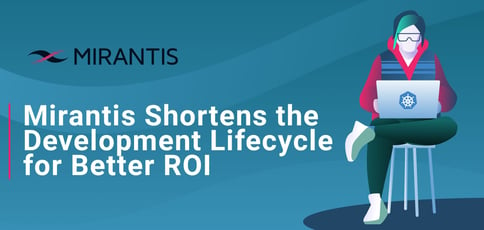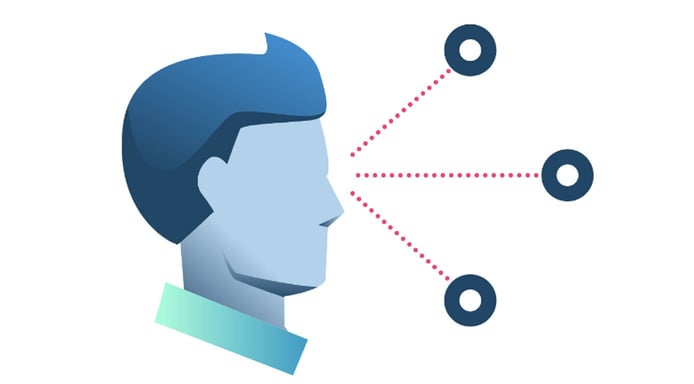
TL; DR: Mirantis prides itself on simplifying cloud-native development and shortening development life cycles to build value for teams worldwide. By leveraging automation and open-source technologies, Mirantis eliminates Kubernetes complexity and reduces operational tasks to give developers peace of mind on every platform. Its Lens tool allows engineers to gain visibility across their Kubernetes clusters to deploy apps faster. A third of Fortune 100 companies trust Mirantis to supercharge their innovation and accelerate their development processes.
A typical development life cycle usually runs four to nine months on average. But, the majority of these projects tend to experience schedule overruns, with 85% surpassing timeline goals.
Of course, before a project can come to completion, developers must work through several stages to pass the finish line. The development/coding and testing/maintenance typically take up most of the time among those stages.
Although time constraints are a common developer pain point, they highlight why the development process needs resources to improve. Mirantis sets out to solve the problem of complexity-fueled time constraints so developers can redirect their efforts to more meaningful tasks.

“If they’re spending their lives doing menial tasks, they’re not looking at how you move IT forward,” said Shaun O’Meara, Field CTO at Mirantis. “So the more we can free them up to look at strategic initiatives, the more they can start to help both the development community and look for efficiencies within an organization, which takes time and effort.”
Mirantis simplifies cloud-native development by equipping engineers with the tools to automate low-value operational duties through CI/CD practices. Kubernetes cluster complexity has long been a pain point for mainstream developers, and Mirantis tackles this issue with its open-source Lens software.
“We also want to make it clear to the operator community and administrators that it’s not about making them redundant. It’s about giving them time and the ability to contribute in more effective ways, I think it’s important to understand our approach is to enable them,” said Shaun.
Mirantis Lens Streamlines Kubernetes Cluster Management
Mirantis Lens IDE software allows developers to take control of their Kubernetes cluster management. Shaun told us that improving the user experience for development teams is the company’s main focus, and Lens certainly does so by speeding up the programming process.
“Ultimately, this is one of those big steps forward in making developers’ life easier. And the real focus here is developers always need access to resources. They will always need access to Kubernetes clusters,” said Shaun.
By creating DevOps tools that deliver on a holistic approach, Mirantis can provide software engineers with the means to deploy at a higher speed while saving on costs. Its Lens tool takes the burden off overwhelmed IT departments and streamlines Kubernetes navigation.
“The capabilities built into Lens allow a developer to click a button and get a running Kubernetes cluster configured within seconds, connected to Lens and their desktop environment,” said Shaun. “They can either use the local CLI or Lens and get workloads pushed to it because everything is presented locally, and start testing workloads.”
The Lens management platform allows users to gain situational awareness and monitor apps across many clusters. This way, developers can use its features to view performance data with built-in Prometheus Stats, troubleshoot issues, and navigate through stacks in real time.
Lens is also compatible with the Mirantis Container Cloud, which allows users to manage applications and custom configurations within a multicloud environment. Mirantis has increased its cloud provider list to accommodate workload mobility and meet various infrastructure needs. The company now supports VMware, Microsoft Azure, Amazon AWS, and OpenStack.
Mirantis has also opened up global access to bare-metal server infrastructure with Equinix Metal.
“We are giving customers bare-metal experience on demand. You can get a bare-metal dedicated server in a controlled environment, close to the hyperscalers, running your software and operating system without a platform on top and fully automated,” said Shaun.
Leveraging CI/CD Practices to Minimize Workloads
Mirantis provides a holistic platform for developers to build their projects in less time and with fewer external resources. Instead of a traditional build model that usually takes months, Mirantis allows users to begin building in days, eliminating the need for consultants and multiple infrastructures. Mirantis is also vendor-neutral.
“We’re shortening the life cycle, so you come in and drop a small container-based management cluster, which enables all of the other deployments, allowing you to rapidly deploy your choice of Kubernetes cluster on any cloud provider or provide for virtualization with OpenStack,” said Shaun.
Developers can also use Mirantis’ services for legacy, telco, VNF, and database workloads that may not be suitable for containerization at that stage. When entering the operating phase, users can leverage its OpsCare to minimize their workloads.
OpsCare automates operational tasks to help companies maximize the potential and output of their development teams. Instead of wasting time on shift work, employees can focus on building value.
“We can monitor those environments and act as the first line of escalation. If something fails, we call your engineer and tell them what the problem is. But they’re not having to monitor and wait for it to fail themselves. Often, we’re able to do that first line of troubling analysis,” said Shaun.
Mirantis also offers OpsCare Plus, a fully managed service that includes third-party and datacenter management. Its team will handle hardware failures and order the solutions and tickets.
“The drive there is to provide that as a service experience for our customers as if they were using public cloud, but still giving them the choice of using their own infrastructure and not getting locked into any one particular cloud provider,” said Shaun.
DevOpsCare: Improving Efficiency for Small and Medium-Sized Development Teams
Mirantis takes its CI/CD outlook to new heights with its DevOpsCare offering. The company essentially operates as an extension of development teams and provides support for operational duties. Shaun said Mirantis aims to make Lens more accessible at the enterprise level and help teams become accustomed to its tools.
“DevOps care is a hand holding team. We essentially come into small to medium-sized development teams and lay down the entire framework of tools necessary to make your development teams work more efficiently,” said Shaun.
DevOpsCare gives teams visibility into their Kubernetes clusters and applications, enabling them to better manage their performance for quicker delivery. It reduces organizational complexity and frees up time for developers to take care of more significant tasks.

“Developers run into problems, and they need support. We’ve got all these people and skills within the organization. We can leverage them and help developers get over the hump,” said Shaun.
Mirantis handles the security and provides CI/CD solutions developers can use to secure and control their applications on any platform. DevOpsCare allows developers to seamlessly accelerate their mission-critical duties while offloading complications for better peace of mind.
Mirantis also has extensive services teams that provide companies and developers with optimizing resources to augment their teams. And it’s no surprise that Mirantis looks to boost user experience even further and advance its mission of making development more seamless.
“The focus for the future will be on ways to help users better manage the application delivery life cycle and better utilize CI/CD — essentially, how do you easily get applications into production and manage those applications from production?” said Shaun.


